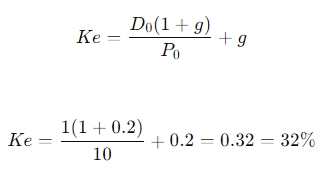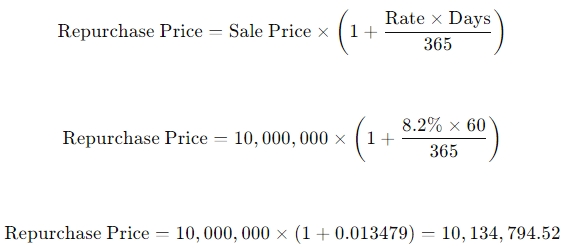- 25 Marks
Question
a) Payback method refers to the period of time it takes for the cash flows to cover the initial cost of investment or recoup the initial cost of investment. The period is usually calculated in years.
Required:
Identify TWO advantages and TWO disadvantages of using the payback method in investment appraisal.
(4 marks)
b) DÉCOR Ltd is analyzing the purchase of a new machine to produce product Z. The machine is expected to cost GH¢2,000,000. Production and sales of product Z are forecast as follows:
| Year | 1 | 2 | 3 | 4 |
|---|---|---|---|---|
| Production & Sales (units/year) | 70,000 | 106,000 | 150,000 | 72,000 |
The current selling price is GH¢30 per unit and is expected to increase by 5% a year. The current variable cost is GH¢18 per unit and is expected to increase by 6% per year. Fixed costs will remain the same, but an increase in working capital is required. Analysis of historical data of the levels of working capital of product Z indicates that, at the start of each year, investment in working capital will need to be 10% of sales revenue of that year.
The company pays tax at 25% per year in the year in which taxable profit occurs. The tax liability is reduced by the capital allowance on the machinery, and DÉCOR Ltd can claim on a straight-line basis over the four-year life of the proposed investment (capital allowance rate of 25% per annum). The new machine will have zero scrap value at the end of the four years. The cost of capital is 15% per year.
Required:
Calculate the Net Present Value (NPV) of the proposed investment and advise whether the proposed investment should be undertaken.
(11 marks)
c) An American company sells goods to a Ghanaian buyer for US$280,000 when the exchange rate is $1 = GH¢4.20. The Ghanaian buyer is allowed three months’ credit, and when the American company eventually receives the US dollars three months later and exchanges them for dollars, the exchange rate has moved to $1 = GH¢4.60.
Required:
i) What was the foreign exchange loss to the Ghanaian buyer?
(3 marks)
ii) Explain currency risk in relation to the above.
(2 marks)
iii) Explain transaction risk in relation to the above.
(2 marks)
iv) What will be the effect of the above on the company’s trading profits?
(3 marks)
Answer
a) Advantages and Disadvantages of Payback Method
Advantages:
- Simplicity: The payback method is easy to calculate and understand, making it accessible to managers without extensive financial expertise.
- Liquidity Focus: It provides a quick estimate of the liquidity risk by showing how quickly an investment can recover its initial cost.
Disadvantages:
- Ignores Time Value of Money: The method does not account for the time value of money, meaning future cash flows are treated as equally valuable as immediate ones.
- Ignores Cash Flows After Payback: It only considers the period until the initial investment is recovered and disregards any cash flows that occur after the payback period.
b) NPV Calculation for DÉCOR Ltd’s Proposed Investment
Revenue Calculations:
| Year | 1 | 2 | 3 | 4 |
|---|---|---|---|---|
| Units Sold | 70,000 | 106,000 | 150,000 | 72,000 |
| Selling Price (GH¢) | 30 | 31.5 | 33.08 | 34.73 |
| Sales Revenue (GH¢) | 2,100,000 | 3,339,000 | 4,962,000 | 2,500,560 |
Variable Costs Calculations:
| Year | 1 | 2 | 3 | 4 |
|---|---|---|---|---|
| Units Sold | 70,000 | 106,000 | 150,000 | 72,000 |
| Variable Cost (GH¢) | 18 | 19.08 | 20.22 | 21.44 |
| Total Variable Costs (GH¢) | 1,260,000 | 2,022,480 | 3,033,000 | 1,543,680 |
Net Cash Flow Calculations:
| Year | 0 | 1 | 2 | 3 | 4 |
|---|---|---|---|---|---|
| Sales Revenue (GH¢) | – | 2,100,000 | 3,339,000 | 4,962,000 | 2,500,560 |
| Variable Costs (GH¢) | – | (1,260,000) | (2,022,480) | (3,033,000) | (1,543,680) |
| Fixed Costs (GH¢) | – | – | – | – | – |
| Contribution (GH¢) | – | 840,000 | 1,316,520 | 1,929,000 | 956,880 |
| Capital Allowance (GH¢) | (2,000,000) | 500,000 | 500,000 | 500,000 | 500,000 |
| Taxable Profit (GH¢) | – | 340,000 | 816,520 | 1,429,000 | 456,880 |
| Tax @ 25% (GH¢) | – | (85,000) | (204,130) | (357,250) | (114,220) |
| Net Profit After Tax (GH¢) | – | 255,000 | 612,390 | 1,071,750 | 342,660 |
| Add: Capital Allowance (GH¢) | – | 500,000 | 500,000 | 500,000 | 500,000 |
| Net Cash Flows (GH¢) | (2,000,000) | 755,000 | 1,112,390 | 1,571,750 | 842,660 |
| Working Capital Requirement (GH¢) | (210,000) | (123,900) | (162,300) | 246,144 | 250,056 |
| Net Cash Flow After WC (GH¢) | (2,210,000) | 631,100 | 950,090 | 1,817,894 | 1,092,716 |
| Discount Factor @ 15% | 1.000 | 0.8696 | 0.7561 | 0.6575 | 0.5718 |
| Present Value (GH¢) | (2,210,000) | 548,805 | 718,363 | 1,195,265 | 624,815 |
Net Present Value (NPV): GH¢877,248
Decision: The project should be undertaken since the NPV is positive, indicating an addition to shareholder value.
c) Currency Risk Analysis
i) Foreign Exchange Loss to the Ghanaian Buyer: The original expectation was to pay:
US$280,000×GH¢4.2=GH¢1,176,000
However, the payment after the exchange rate change was:
US$280,000×GH¢4.6=GH¢1,288,000
Foreign Exchange Loss = GH¢112,000
ii) Currency Risk Explanation: Currency risk arises from exposure to the consequences of a rise or fall in an exchange rate. Here, the Ghanaian buyer was exposed to the risk of a fall in the value of the cedi, leading to a higher payment in cedi terms.
iii) Transaction Risk Explanation: Transaction risk occurs when a financial transaction is settled at a future date, exposing the company to potential exchange rate fluctuations. Here, the risk lasted from when the goods were sold on credit until the time of payment.
iv) Effect on Company’s Trading Profits: Trading profits can be significantly affected by currency movements. In this case, the foreign exchange loss of GH¢112,000 reduces the company’s profit, highlighting the impact of exchange rate volatility on financial performance.
- Tags: Currency risk, Exchange Rate, NPV, Payback Period, Transaction Risk
- Level: Level 2
- Uploader: Joseph



